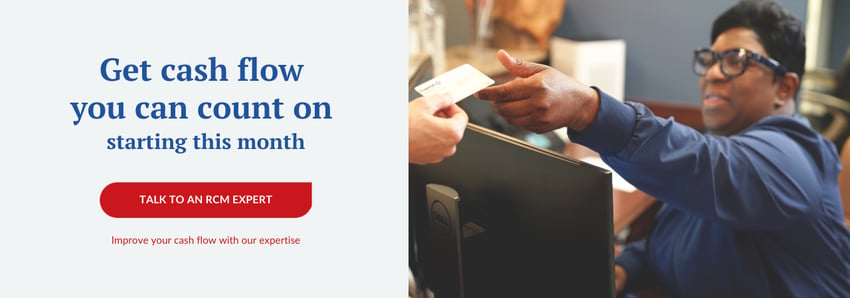What variables affect my dental office collection percentage?


To have a successful dental practice, you have to know how to generate and collect revenue! You’re forced to figure out all of these skills on your own, with no one warning you how much work goes into owning a business. We at Dental Claim Support know a lot about what is going to help your practice make money. We have been helping dentists all over the United States increase their collections percentage since 2012. Our team of remote billers will all start by telling you this:
In order to have a successful dental practice, you need to have a high collections percentage.
Payments in any medical office, specifically a dental office, are not usually linear. There are other parties involved in the payment, A.K.A dental insurances. Because the process can be a little “zig-zaggy,” sometimes you are not always getting paid the entirety of what you have earned while performing a procedure.
In this article, you will learn what variables play a role in your collections percentage decrease AND increase. We’re going back to the basics of how dentists bring in revenue. It’s important to understand your collections percentage in particular because it really is a direct reflection of how well your dental practice is performing.
What is a collections percentage?
A collections percentage is quite literally how you make money as a dentist. The money you collect from the patient and insurance companies is your stream of revenue. First and foremost, you need to know how to calculate your collections percentage.
To calculate your collections percentage, use this formula:
Total Collections / Total Adjusted Production = Collections Percentage
For a more in-depth explanation on how to calculate your collections percentage, visit our blog article, “How to Increase your Collections Percentage.”
What is the average dental collections percentage?
According to this article by DentistryIQ, the average collections percentage is 91%, but you don’t want to be average. You want your collections percentage to be between 98%-100%.
How does the collections process work in a dental office?
Collections come both in the form of patient payments and insurance payments.
A patient comes into the office, they have their procedure done, and then afterwards, they come to your front desk and pay their patient portion. Insurance is then expected to pay the rest of the sum for the procedure performed.
To have insurance pay their portion, you have to create a claim and send it through the clearinghouse to the insurance company. The insurance company then pays the claim, sends you a payment back via check, virtual credit card or electronic funds transfer (EFT).
These different forms of payments make up your collections! Congrats! You just got paid.
Remember, both the patient and the insurance company need to pay their portions in full. Unfortunately, we know this doesn’t always happen.
Is there a leftover payment balance from the oral procedure? Did the patient pay their part? Did the insurance company pay their part? This is a pretty simple way of looking at it, but these two parties paying their part of the procedure is what the collections process is.
What variables will make my collections percentage decrease?
Some of these things causing a lower collections percentage are simple practices that are easy to forget and let’s face it, we’re all humans. You’ve got a lot on your plate already, but here are a few reasons you’re seeing a decrease:
- You’re not collecting from patients up front before they leave.
- Some dental offices choose to send electronic bills to patients via email after they have already left the office. It’s pretty easy to not see an email or to delete it and never think about it again.
- Time is money and you are wasting your money by not collecting from the patients up front. This is also costing your practice directly with stamp costs, envelopes, printing, and paper.
- You’re “too nice.”
- We know it’s awkward to insist on payment when the patient gets upset about how much they owe you. Maybe they aren’t upset at all and they’re saying “send me a bill,” or “mail it to me!” Don’t let the patients walk all over you!
- When patients are shocked about how much they owe you after a procedure, it’s probably because they don’t completely understand their insurance policies or coverage. Educate your patients on their own insurance policies.
- Inaccurate information on your insurance claim form.
- This is where some user-error comes in. Like we mentioned before, you’re a human! You make mistakes.
- Inputting correct information is crucial when sending claims to insurance companies. If you put a wrong number or misspell something, you will not get paid by the insurance company.
- When you get a birthday wrong, or a patient’s ID number wrong, you will not get paid and will have to go back and figure out where you went wrong.
- If you’re sending several claims a day, this can be difficult research and take a lot of time.
- You’re not working your insurance aging report.
- So you’re not getting paid by insurance companies. What’s an insurance aging report, you may ask? It’s a report of insurance companies with outstanding claims, in other words, a list of insurance companies that owe you money.
- When you work your insurance aging report, it’s kind of like you’re sending them the bill to be picked up. This is a more tedious process, so it slips through the cracks sometimes.
A messy collections process could mean there isn’t clear communication with the patient about insurance and cost of their procedure. It could also mean claims are not being submitted in a timely manner and whoever is submitting these claims might be rushed and make a few mistakes. Cleaning up and streamlining this process is what will make that collections percentage go up.
What variables will make my collections percentage increase?
To increase your collections percentage, there are a few things you need to change about the education of your staff, your check-in and check-out process, and possibly the structure of your practice.
- Insurance Verification.
- Before a procedure, verify your patient’s insurance provider. The patient should also know and understand how much of the procedure will be covered by their insurance. This is an important conversation to have upfront.
- A clear and rigid check-in and check-out process.
- The word “rigid” sounds negative, but if all parties are aware of the way things are done at your office, there will be no surprises. When a patient is checking in, or better yet when they are on the phone scheduling their appointment, make sure you gather all pertinent information in order to verify their insurance. This way you will know what insurance will pay and what the patient will owe when they come in for their visit. Remind them what forms of payment you do or do not accept, and that payment must be made the day of their procedure.
- An educated staff.
- This covers a lot of different things. Your staff should be educated on your clear check-in and check-out system, how important it is to collect payments from patients the day of their procedure, and how they should be sending claims to insurance companies.
- Whoever is in charge of billing should be fully educated on your billing software and know how to post payments in a timely manner. This might mean you have to invest in a person to train your staff on the software, but this is an extremely valuable investment considering it is how you will get paid and be able to pay your employees.
- A dedicated billing person (or company).
- When there are user errors in insurance claims such as wrong birth dates or patient ID numbers, it is likely because someone is also trying to multitask while submitting claims. Many times your dental team can’t find time to perform all billing tasks because they are stretched a bit thin. We highly recommend having someone who is solely responsible for billing.
- Dental billing is tedious and time consuming, and needs focused attention instead of someone who is also answering phones and checking in patients. Whether this means hiring a billing coordinator or outsourcing your dental billing is up to you, but it needs to be that person’s main priority.
These factors make for a successful dental practice with a high collections percentage because of the investment in tools and resources for your staff. Tools that help them understand how to communicate clearly with patients, retrieve important information from them, and commit time to posting payments, submitting claims, and researching unpaid claims. That is what a smooth collections process looks like.
How do you maintain a high collections percentage?
Learning as much as you can about dental collections is an important step towards increasing that percentage and in-turn, your daily revenue. When you understand every angle of what is affecting your collections, you can gain a better understanding of how to improve your billing process.
Understanding your collections percentage is critical to your journey to having a successful dental practice. To further your journey, read our article that takes a deep dive into how you can increase your collections percentage on your own or with an outsourced dental billing company.
Related Posts
Dental revenue resources from Dental Claim Support
.png)
